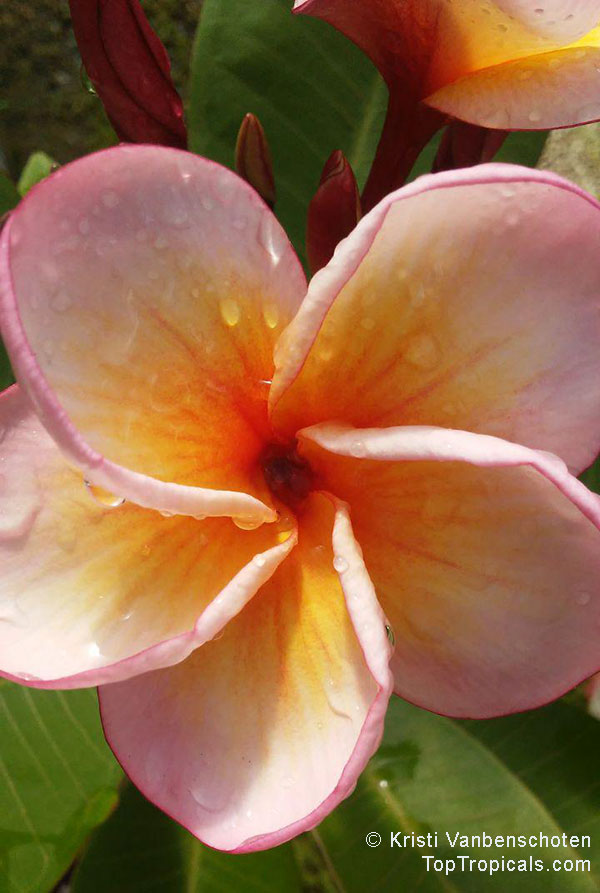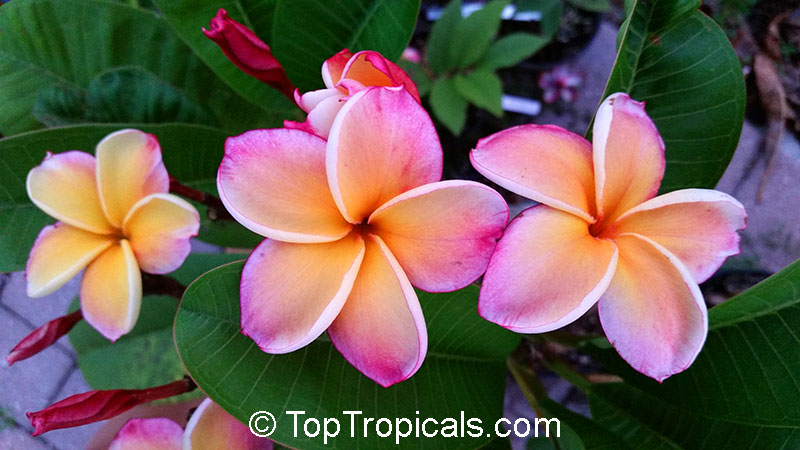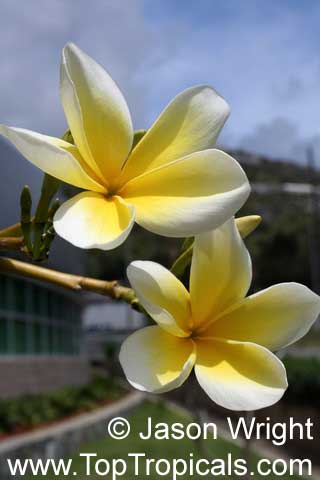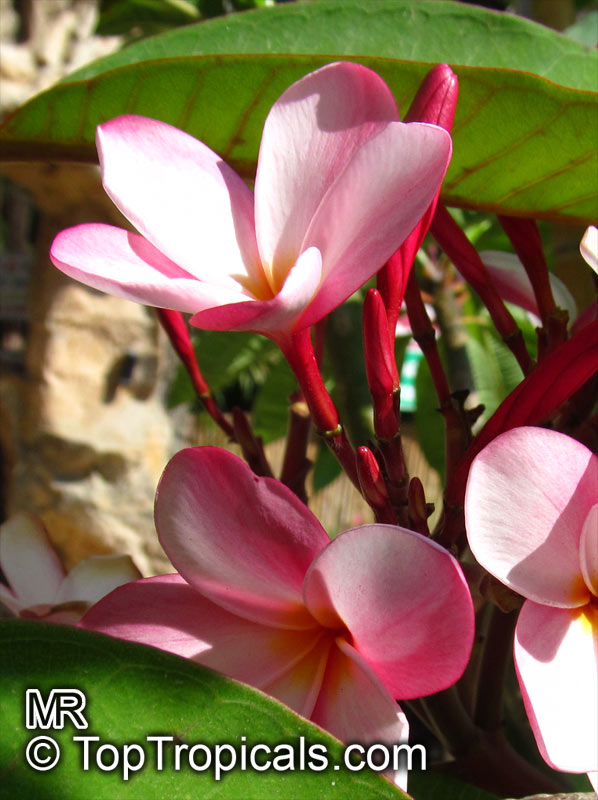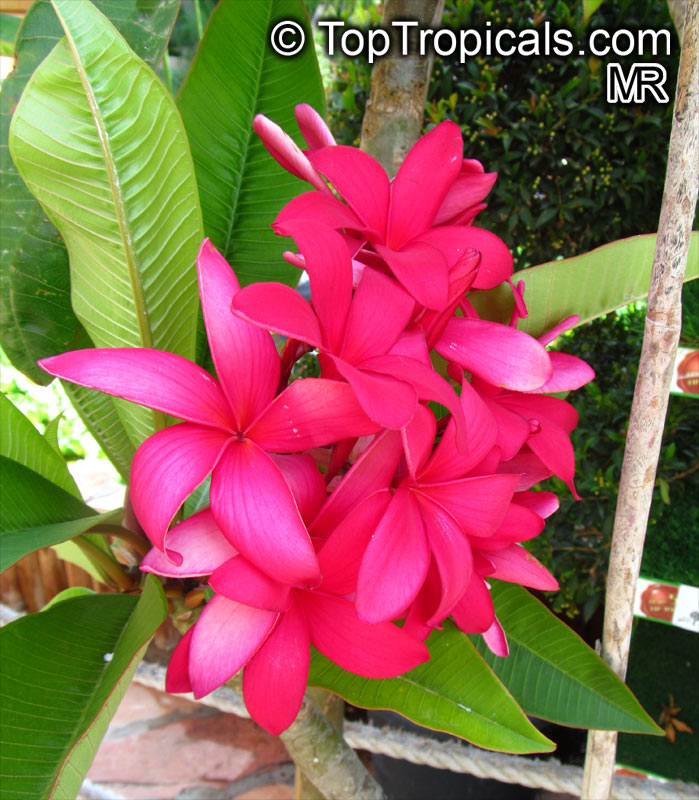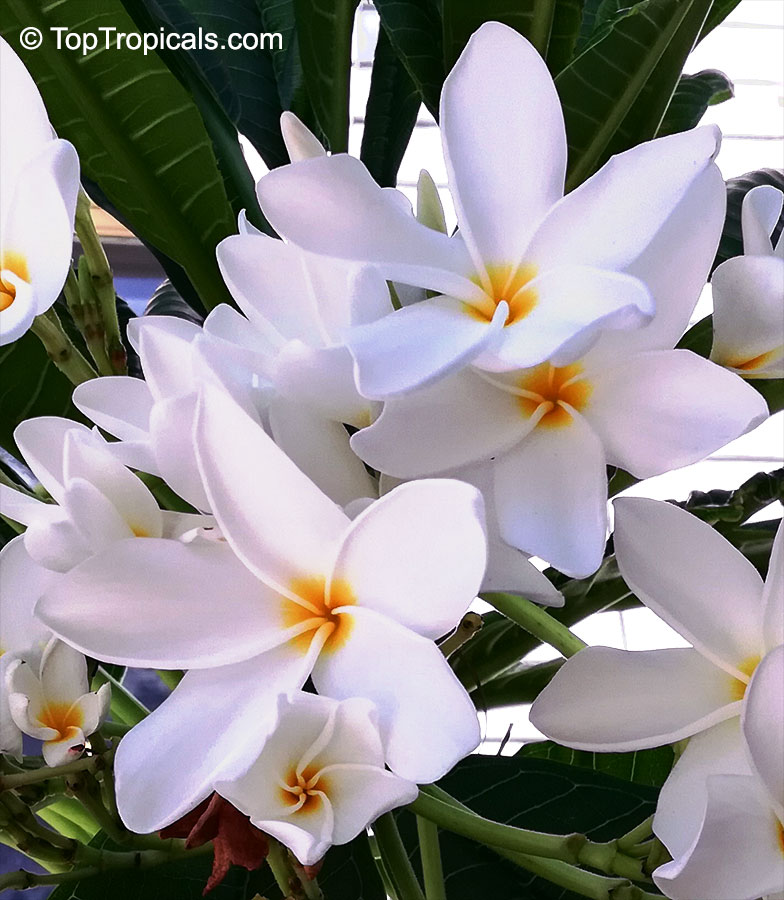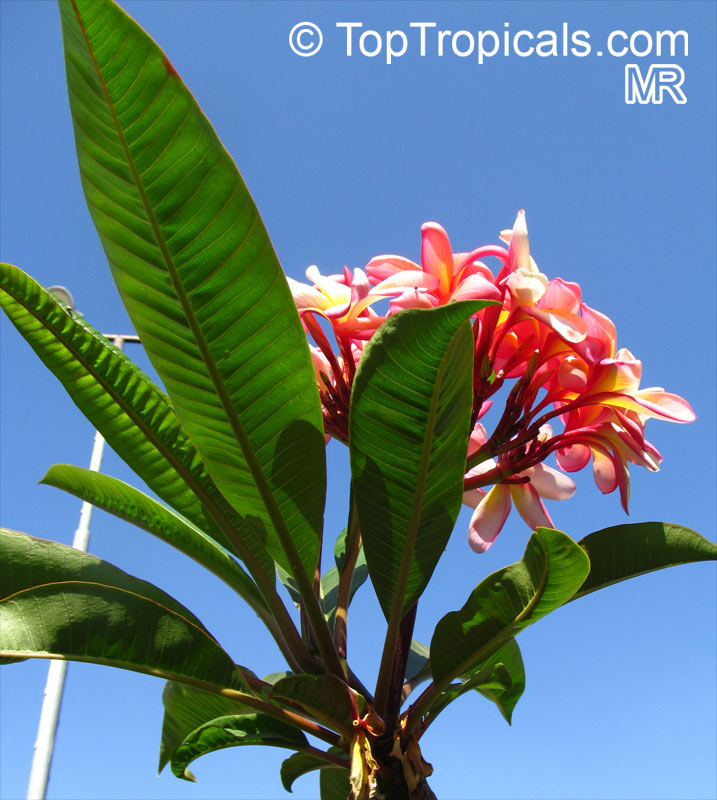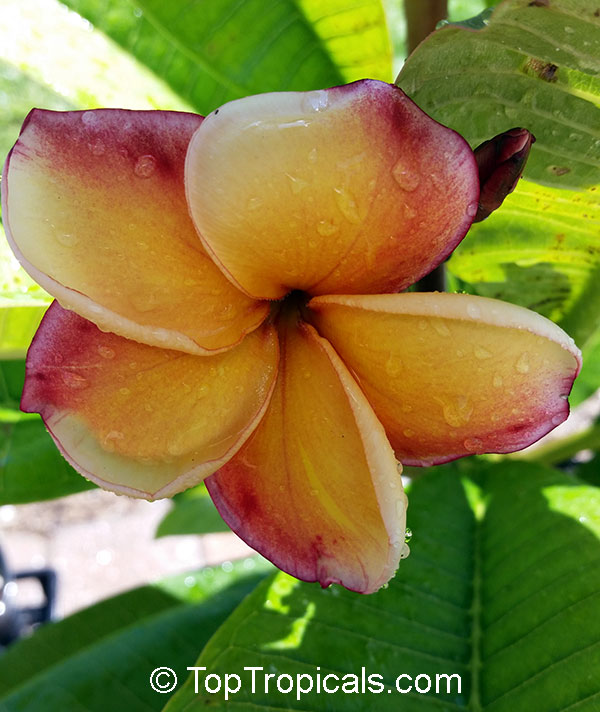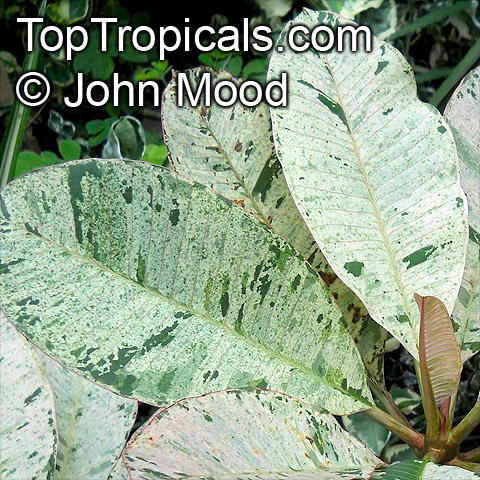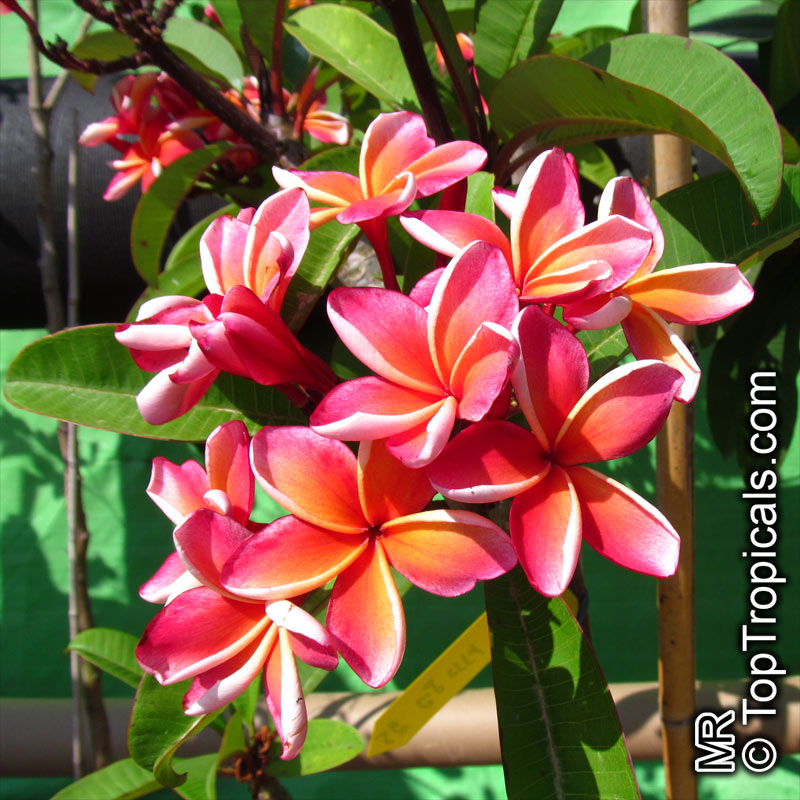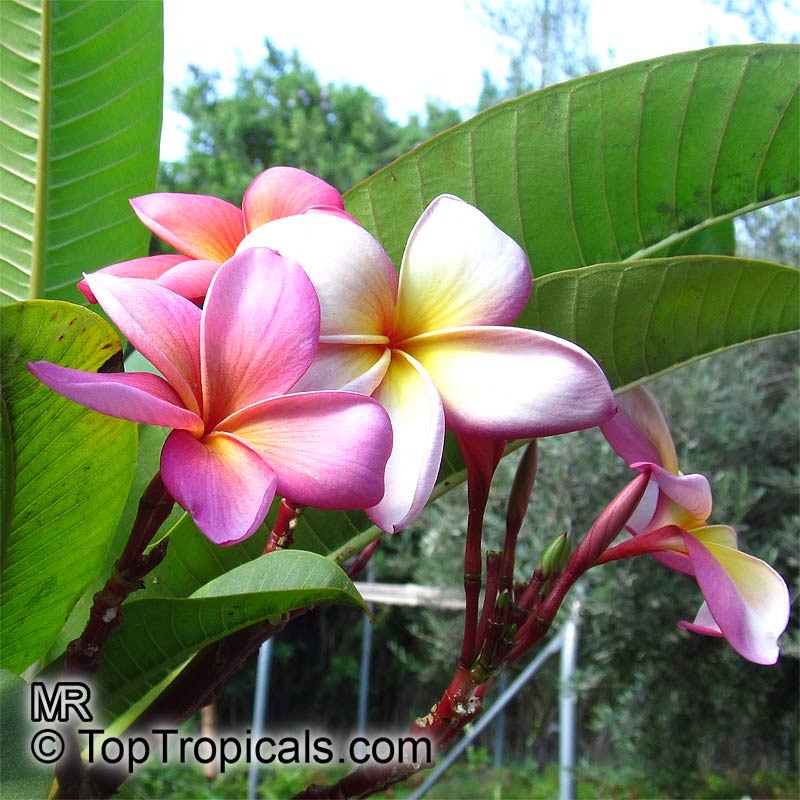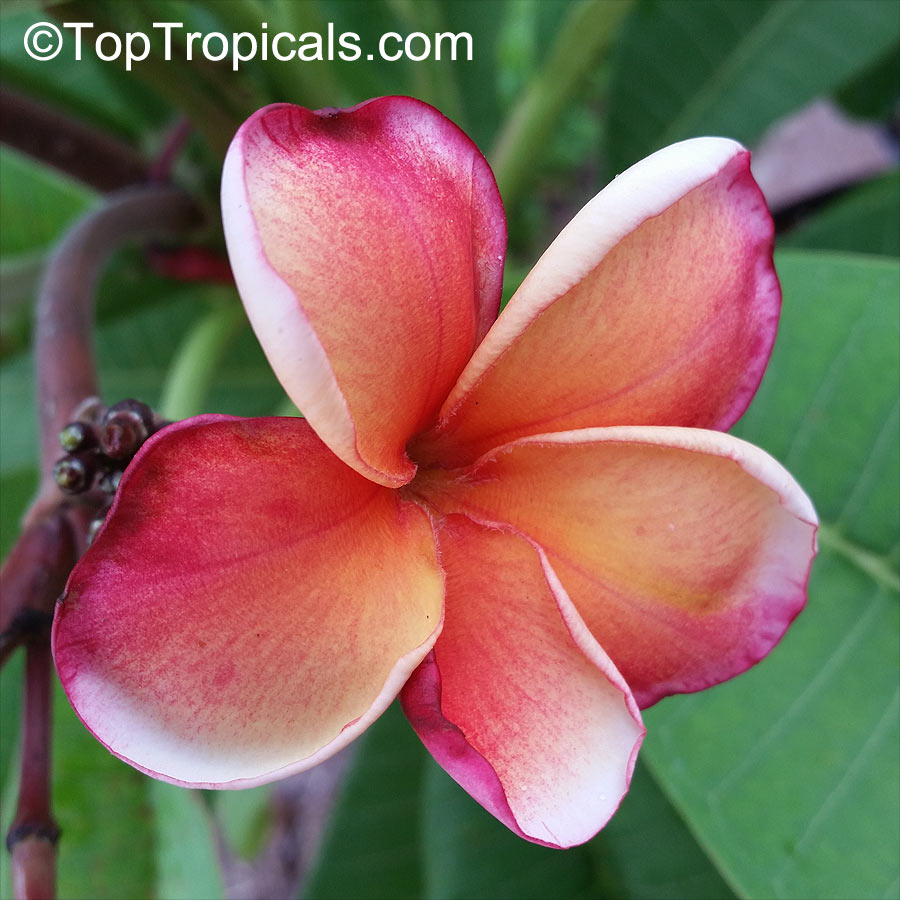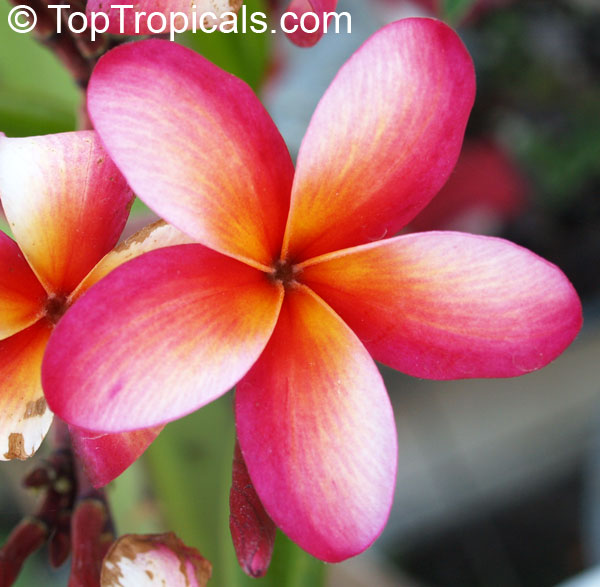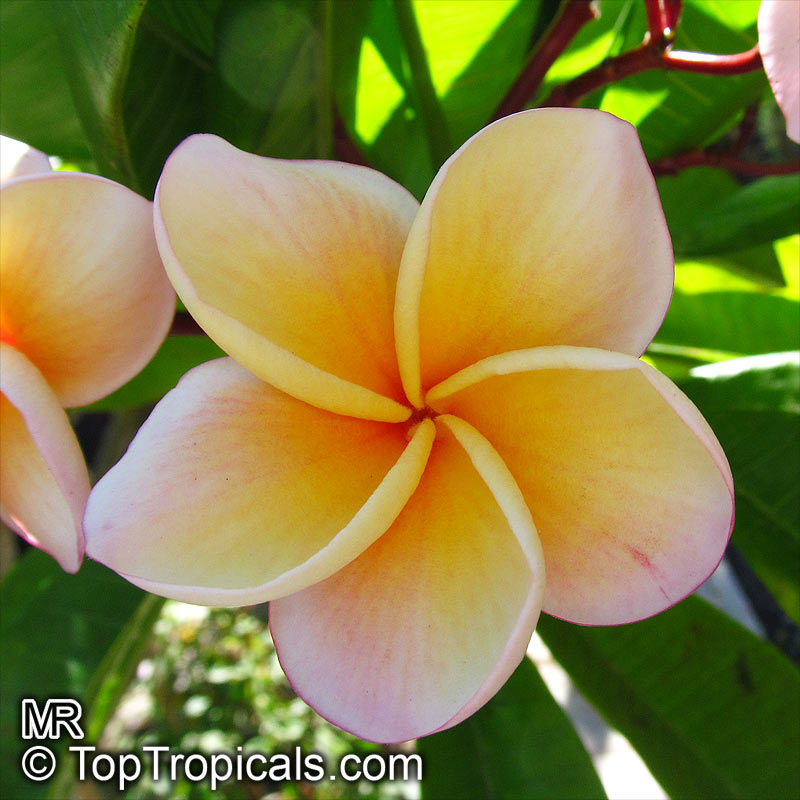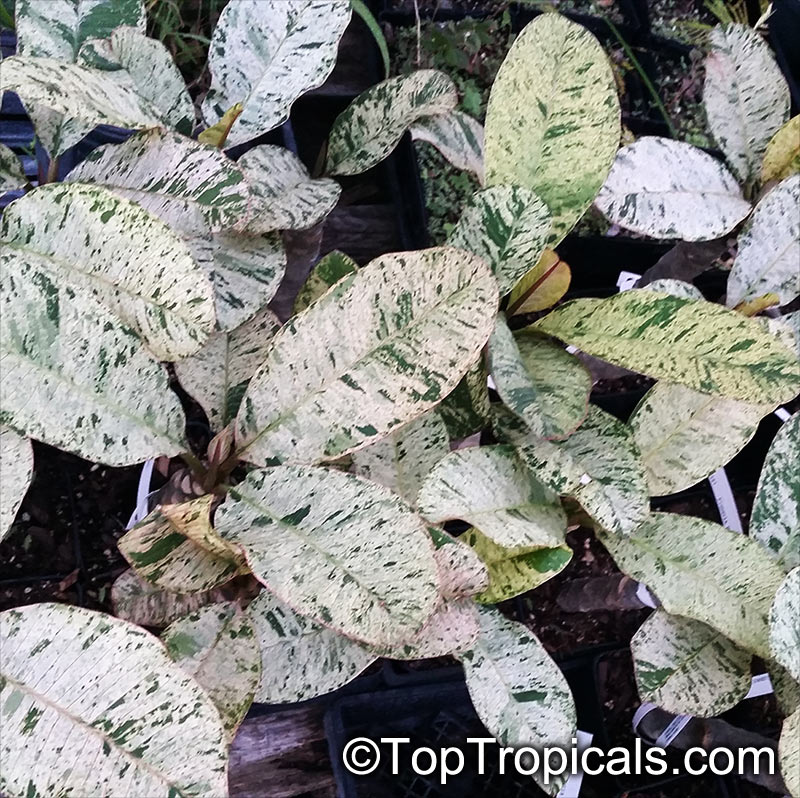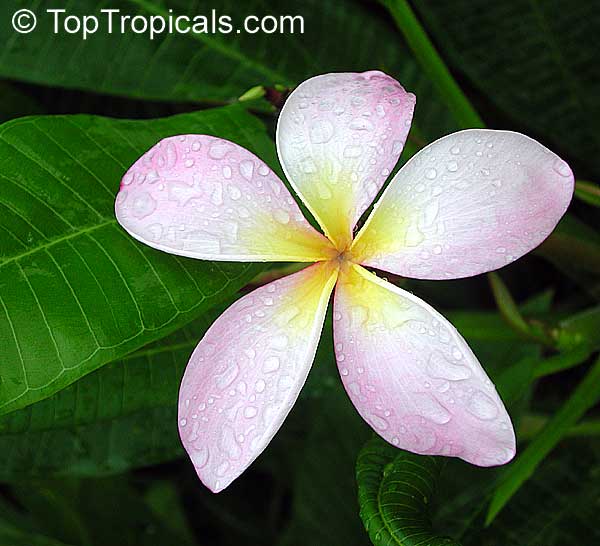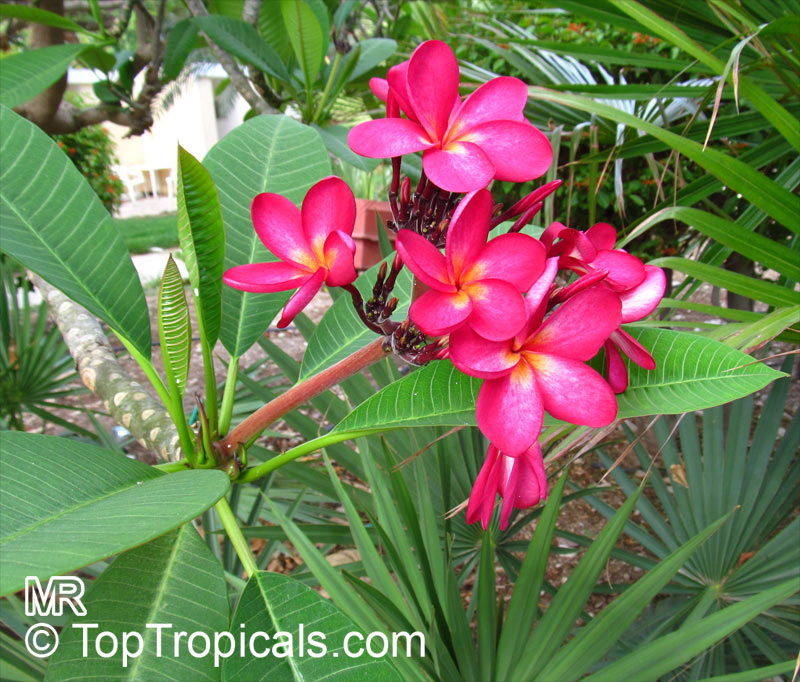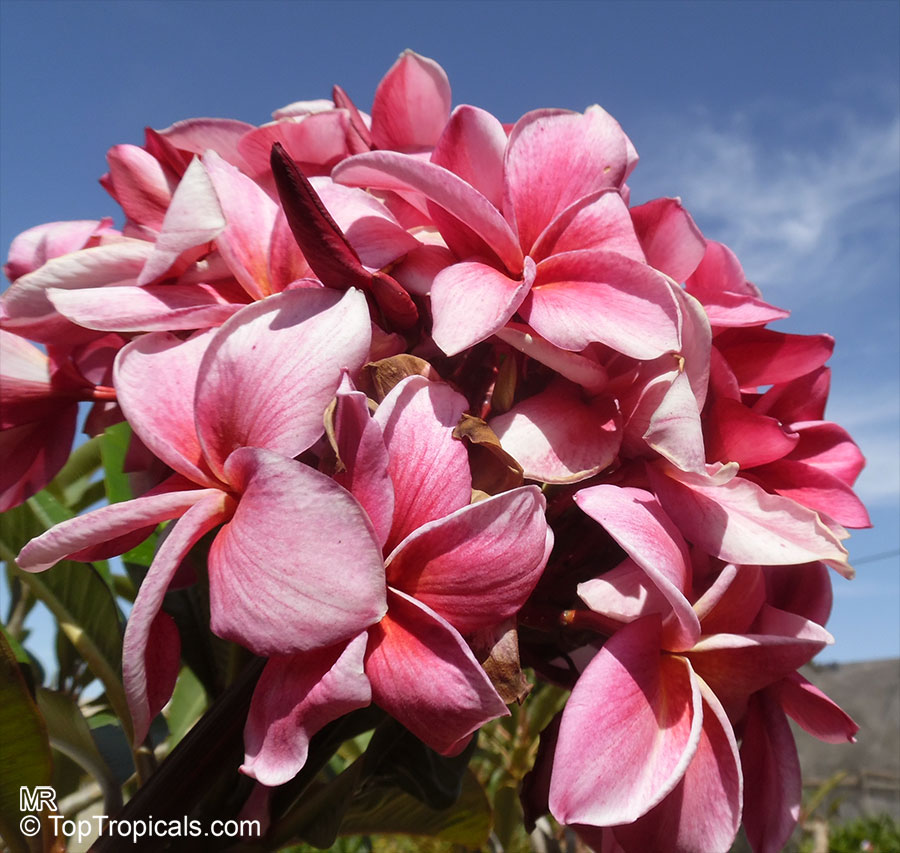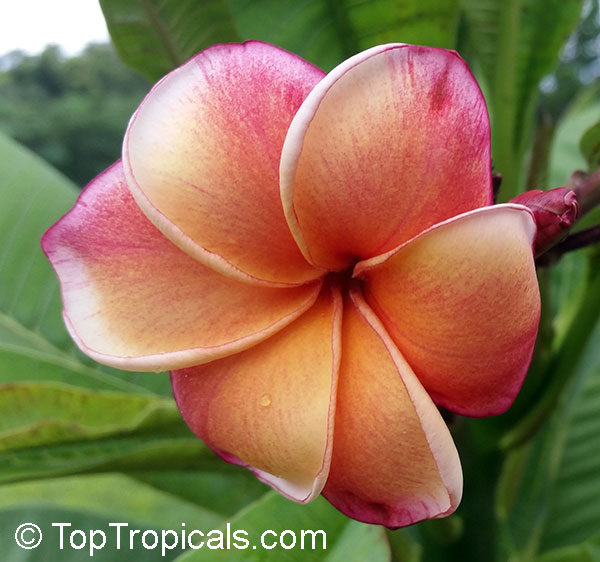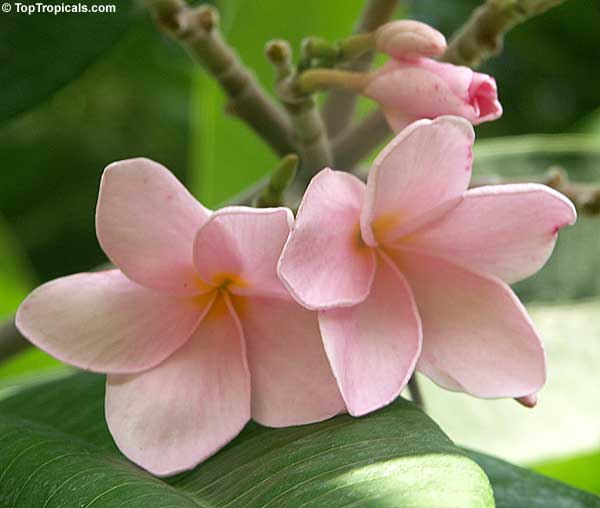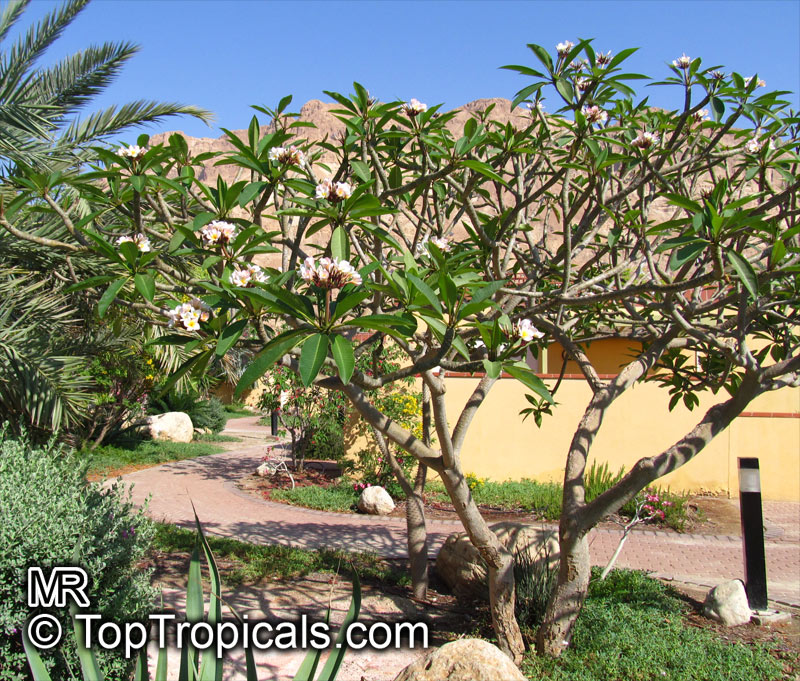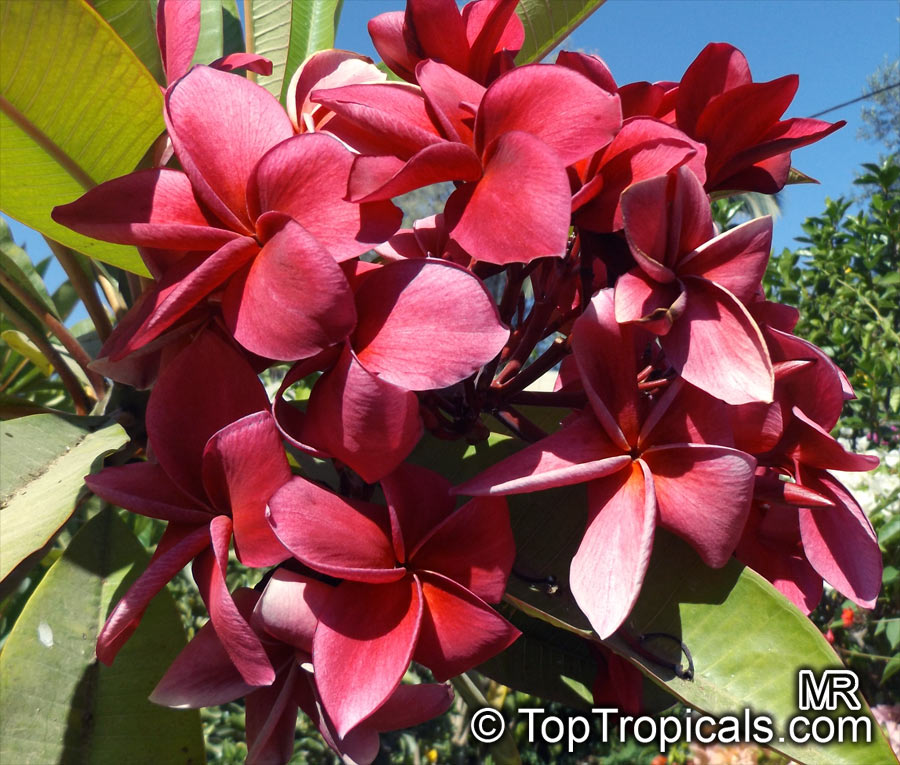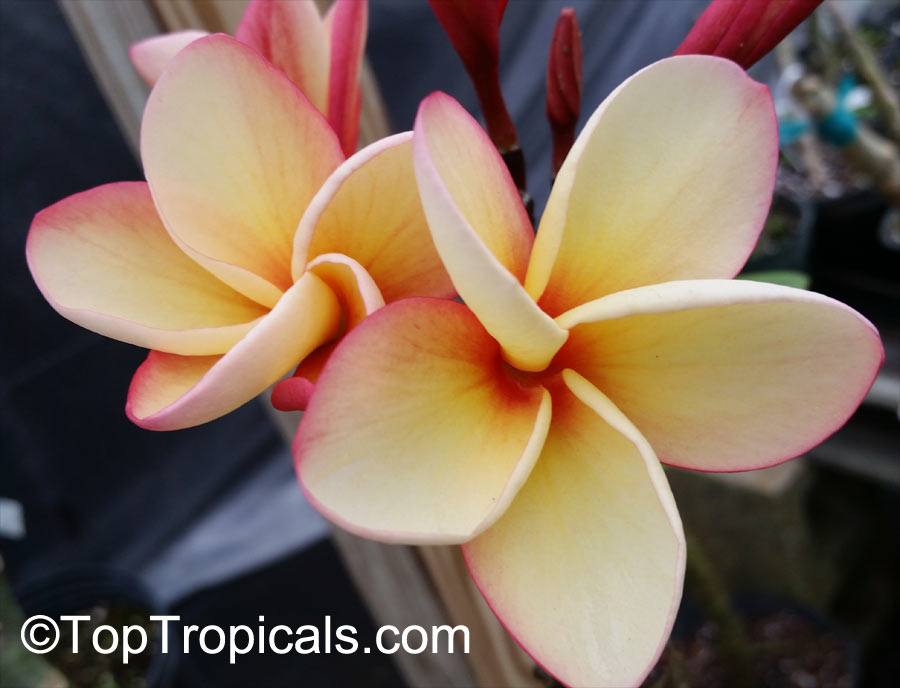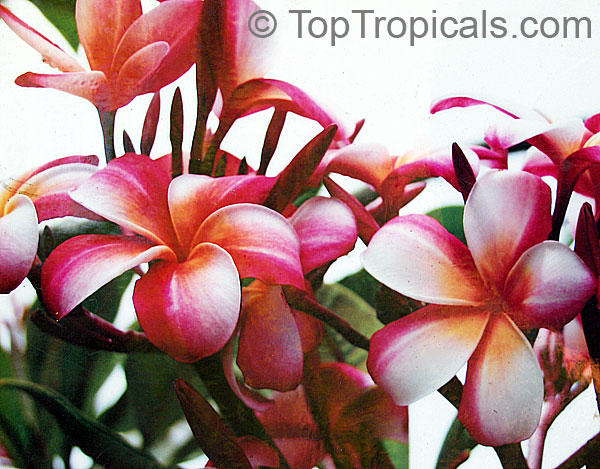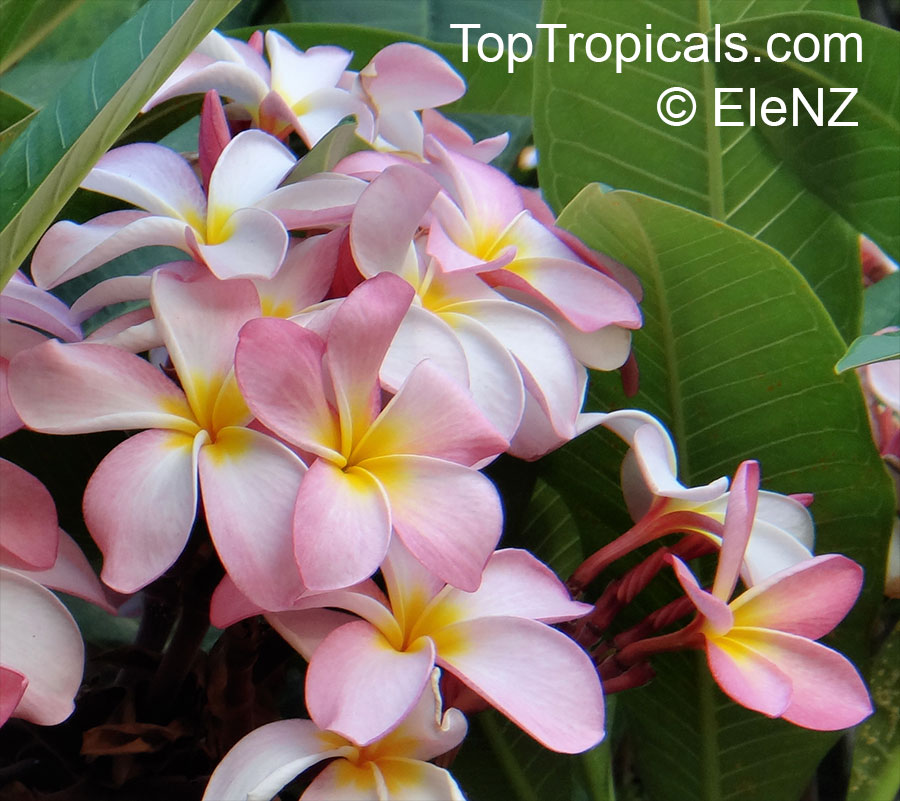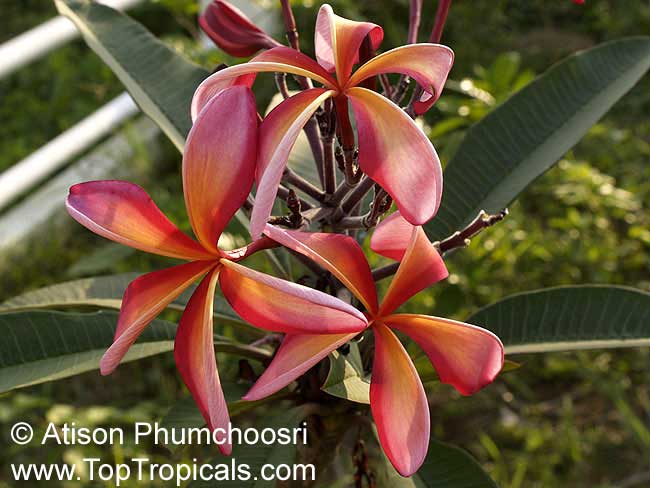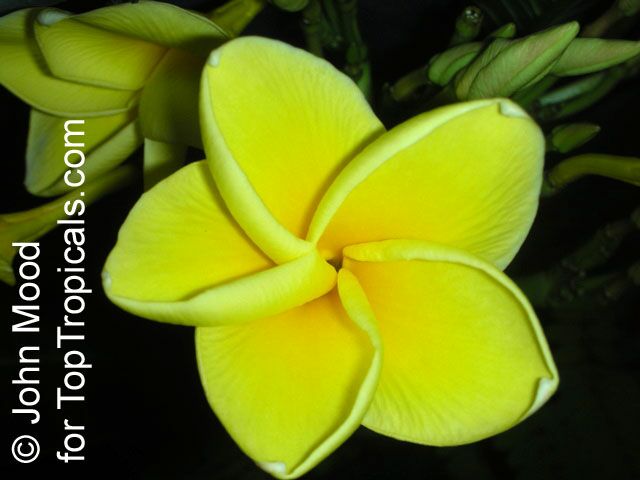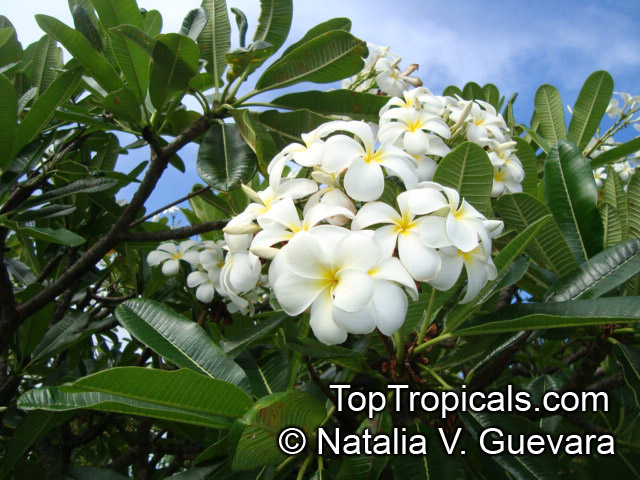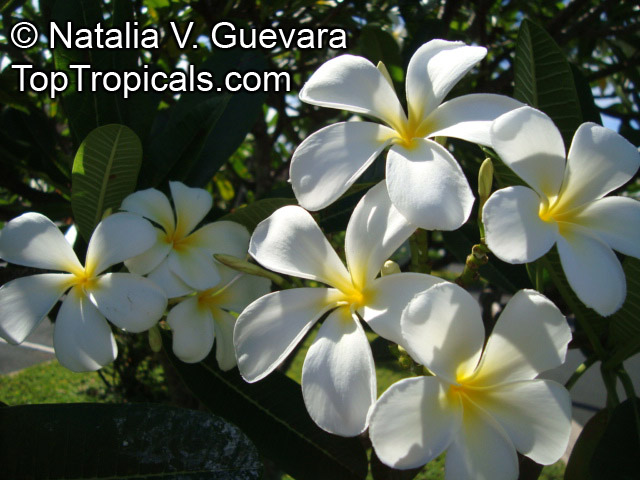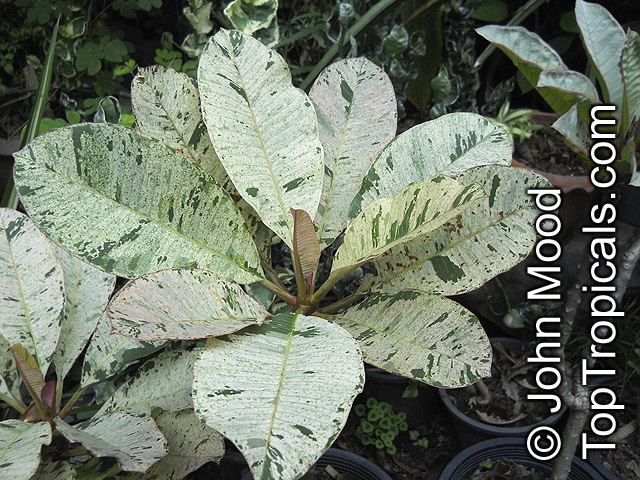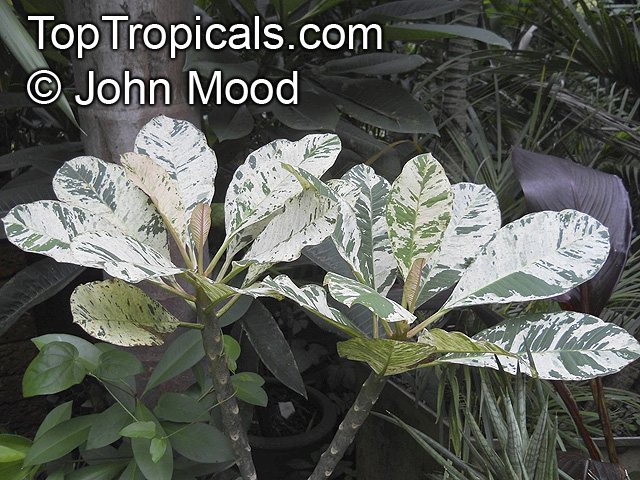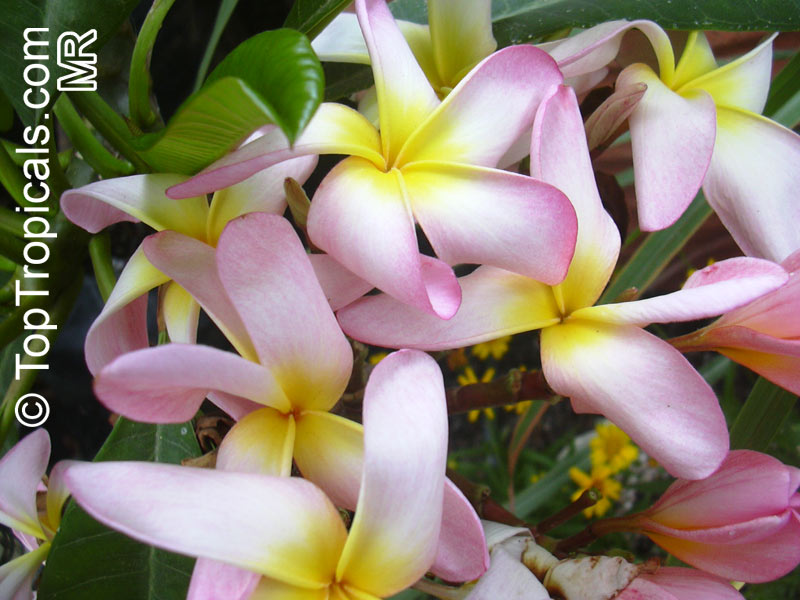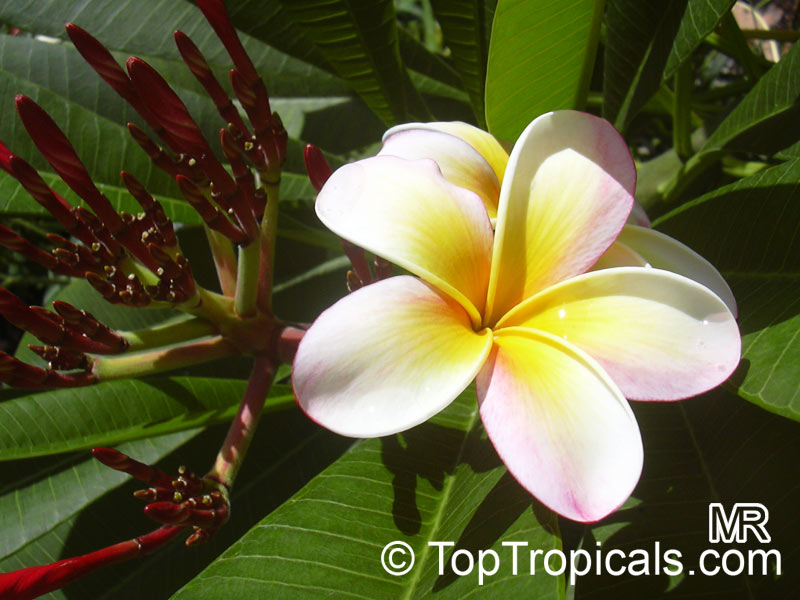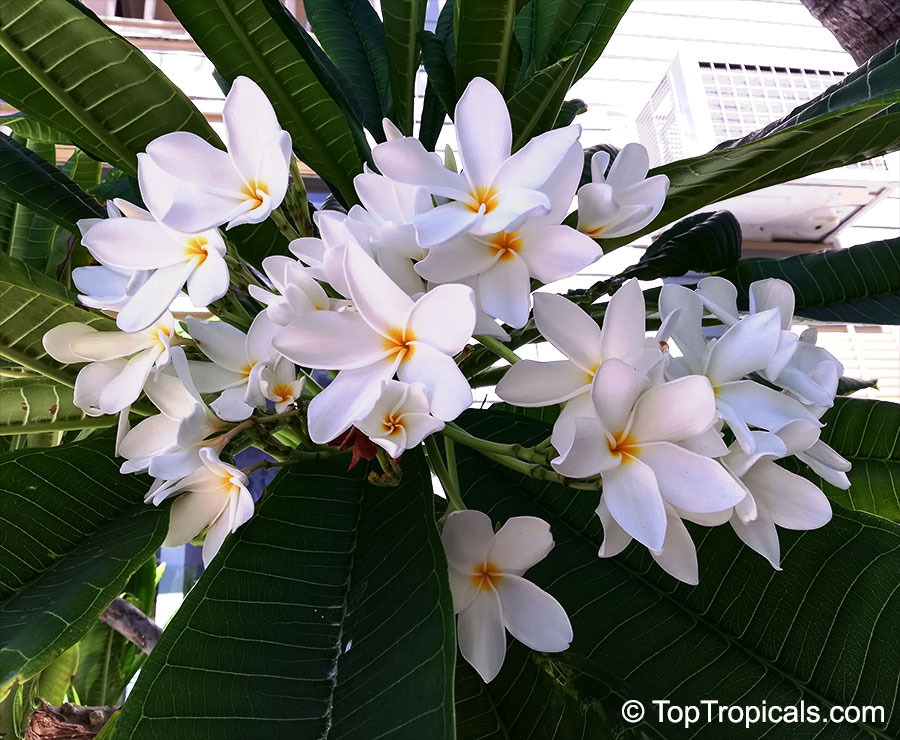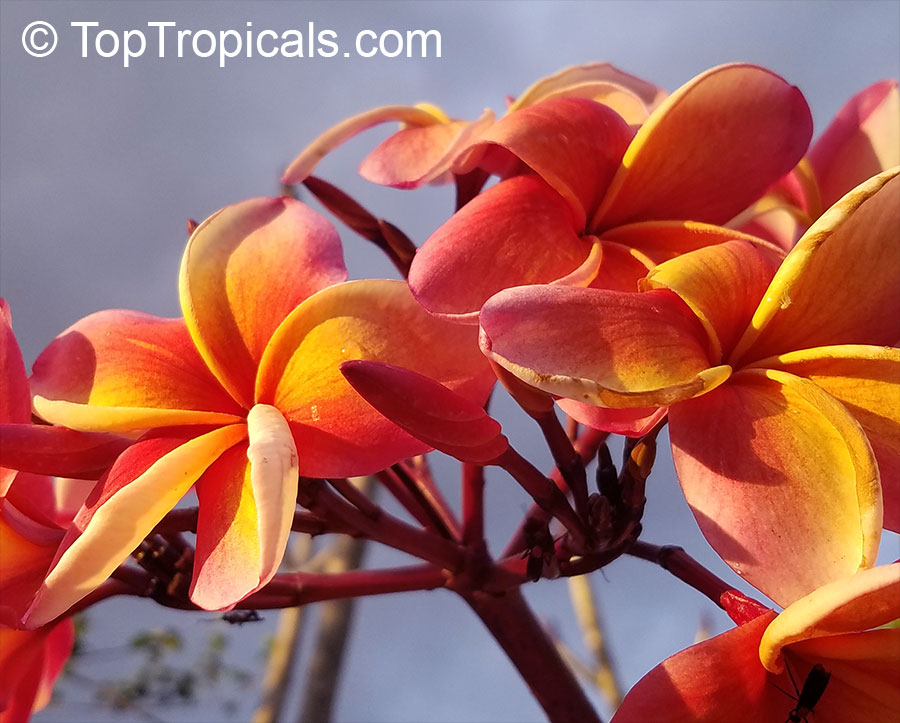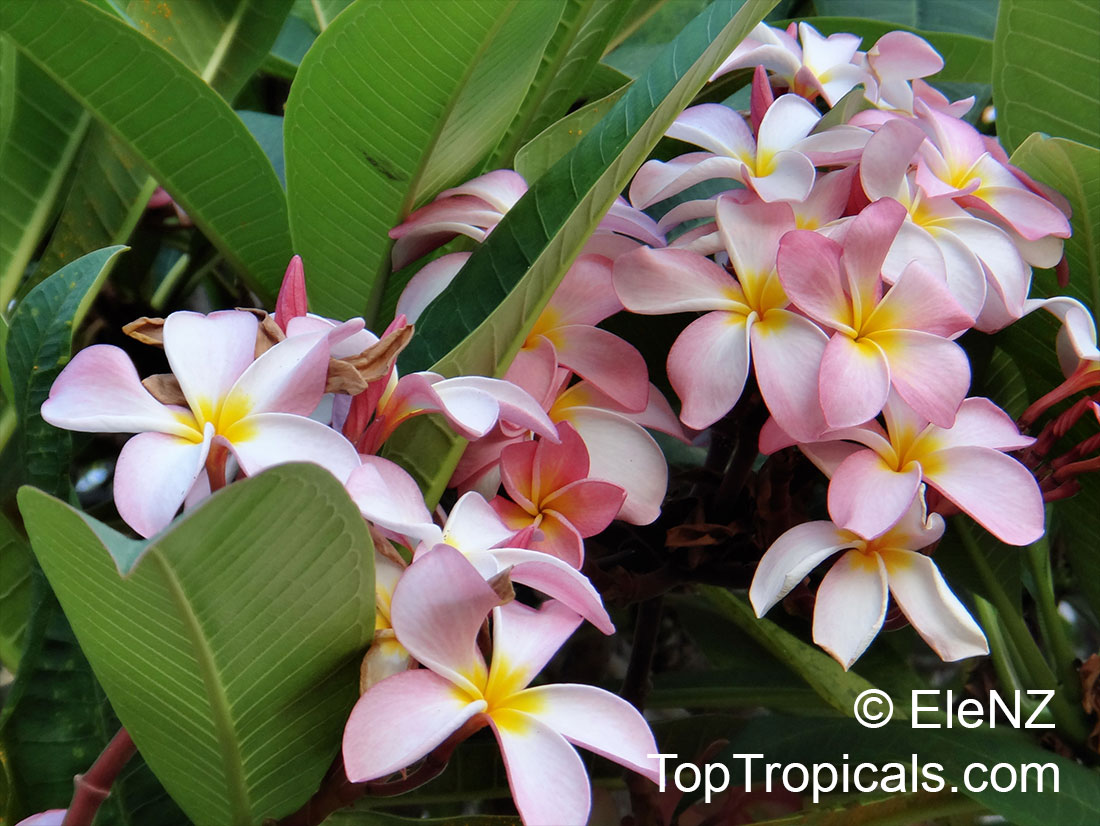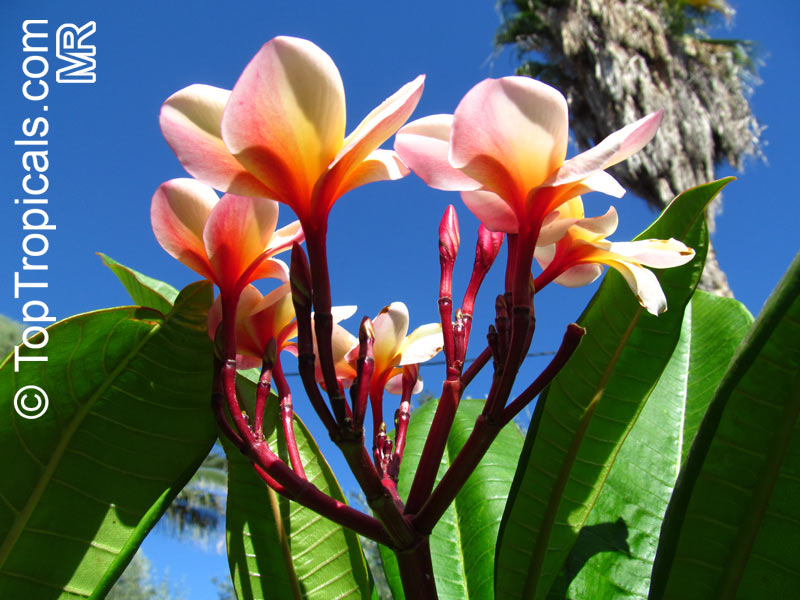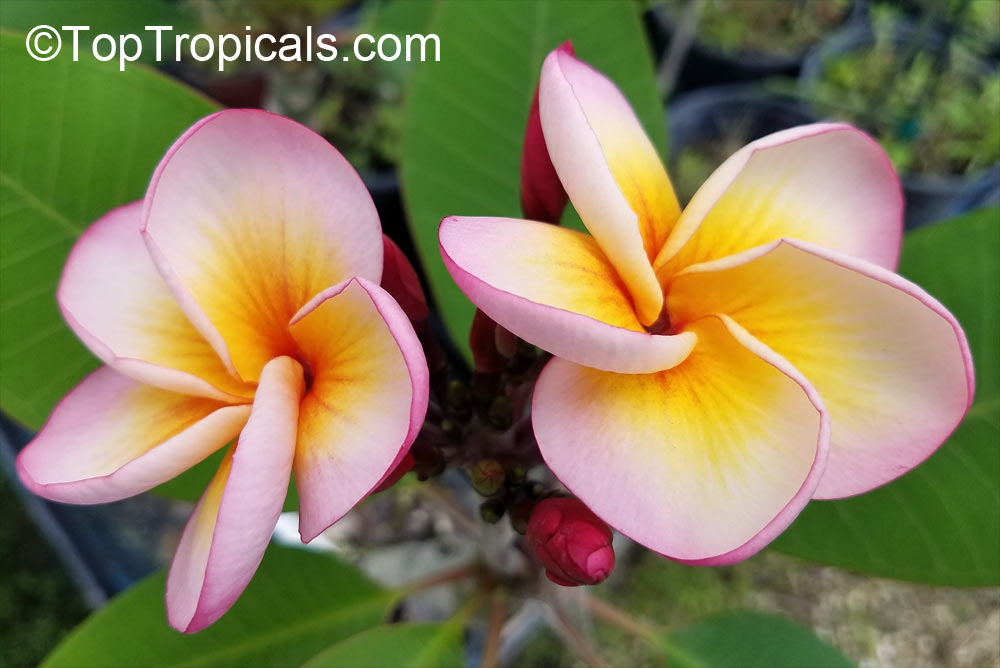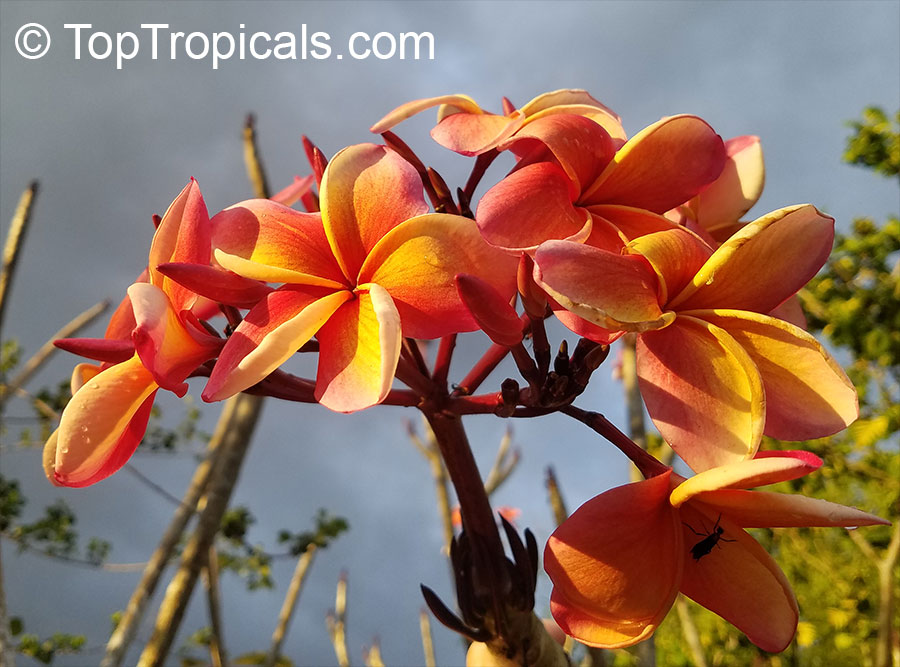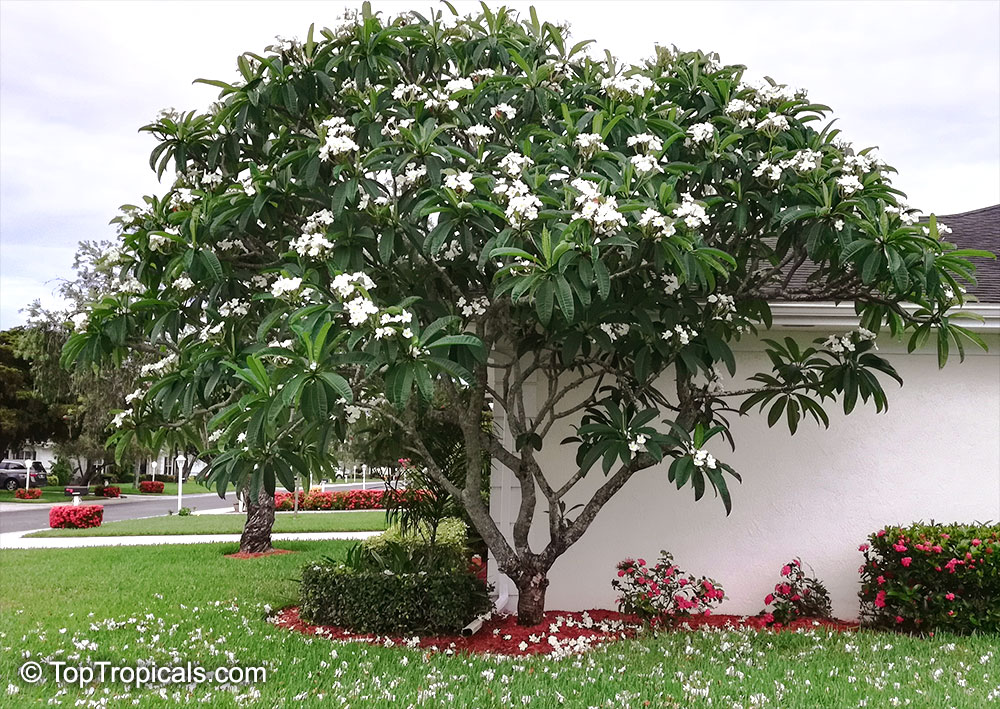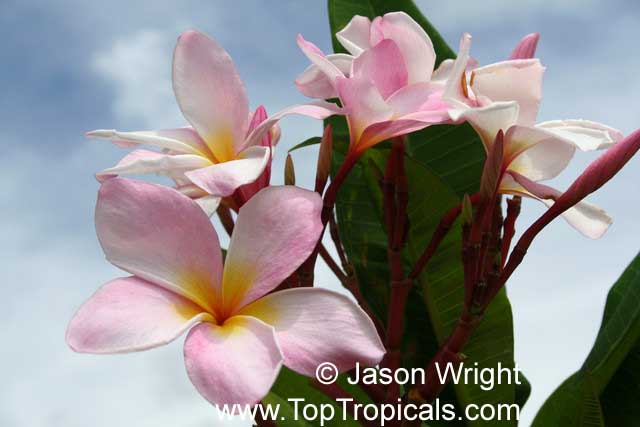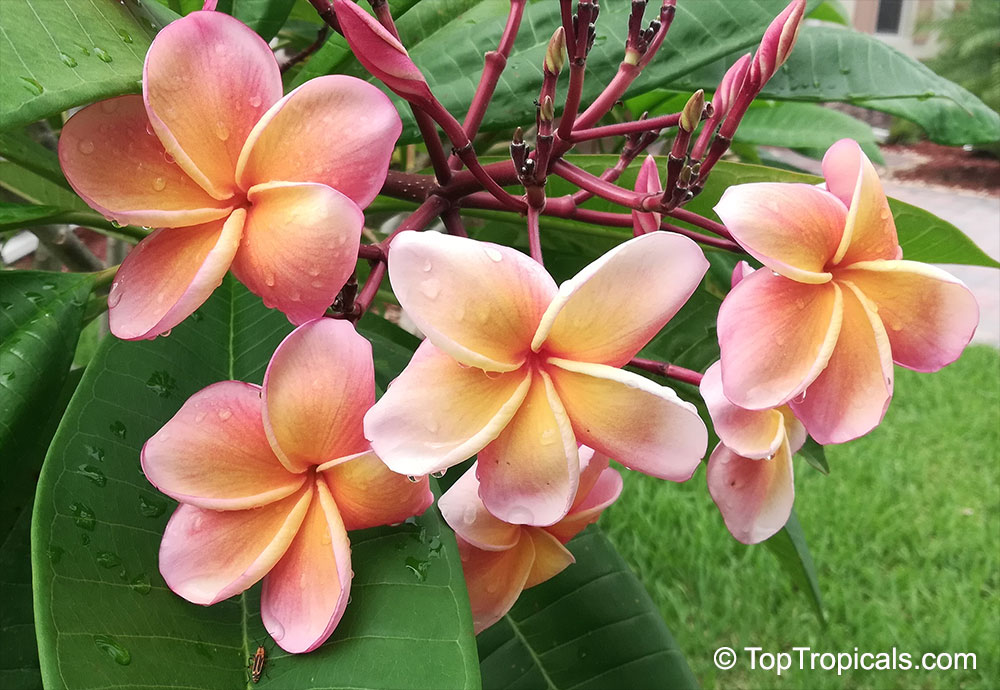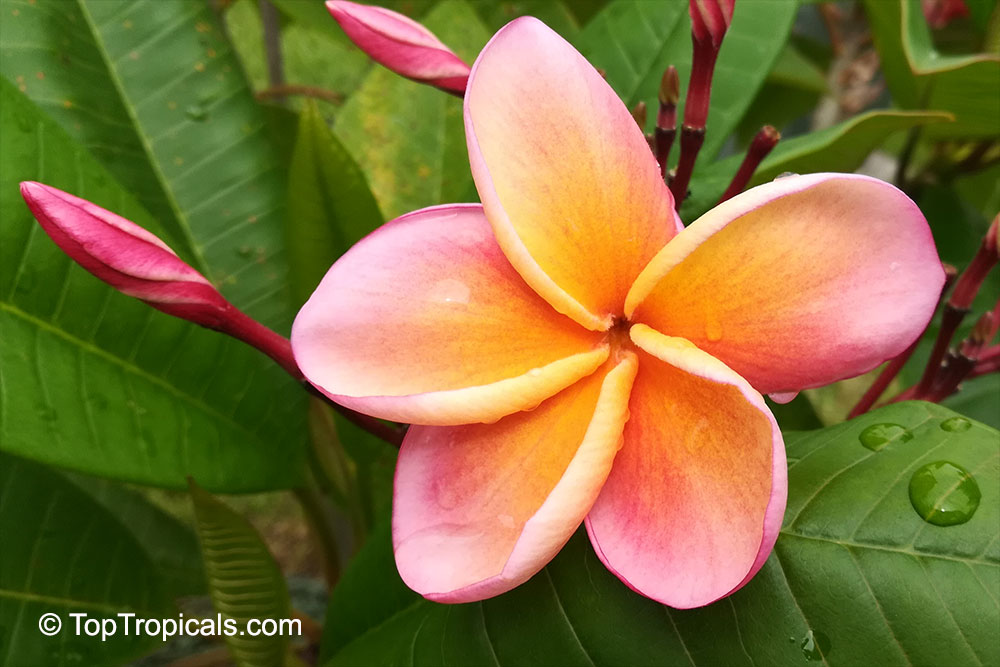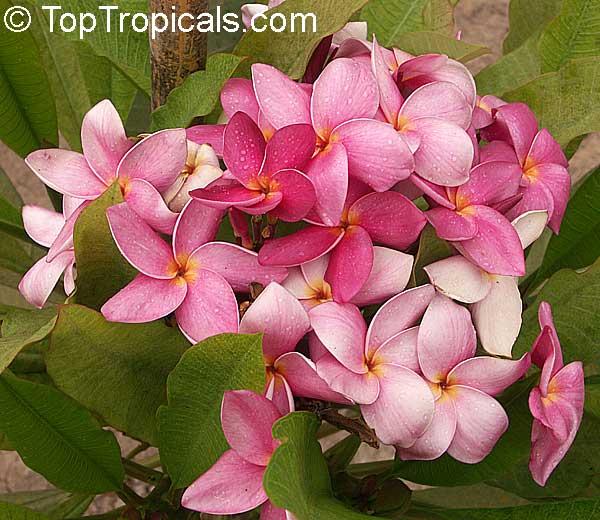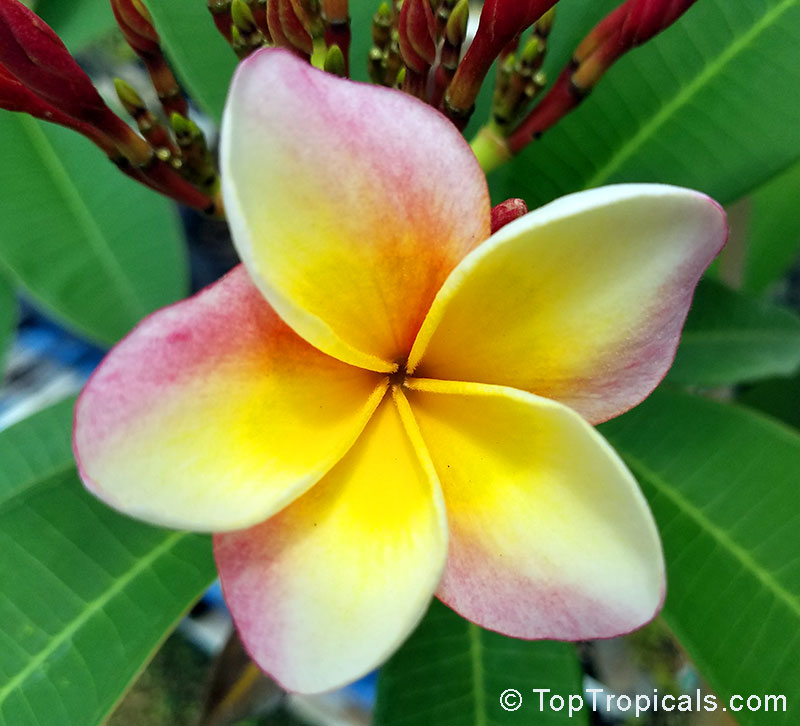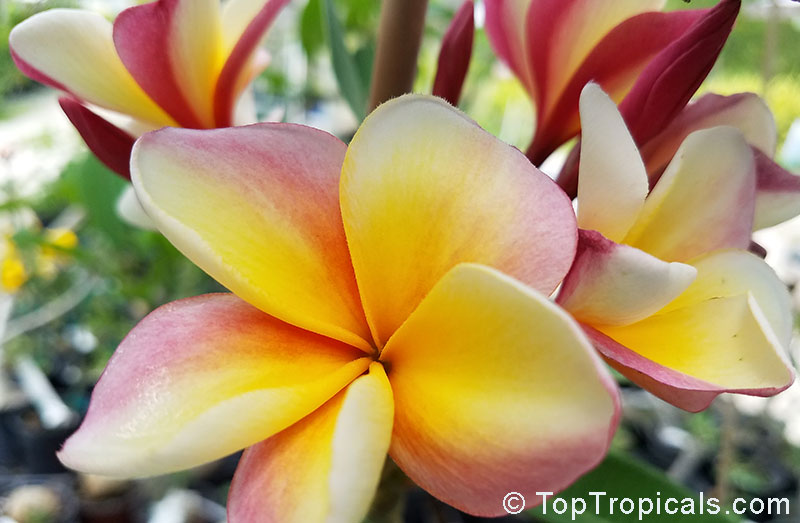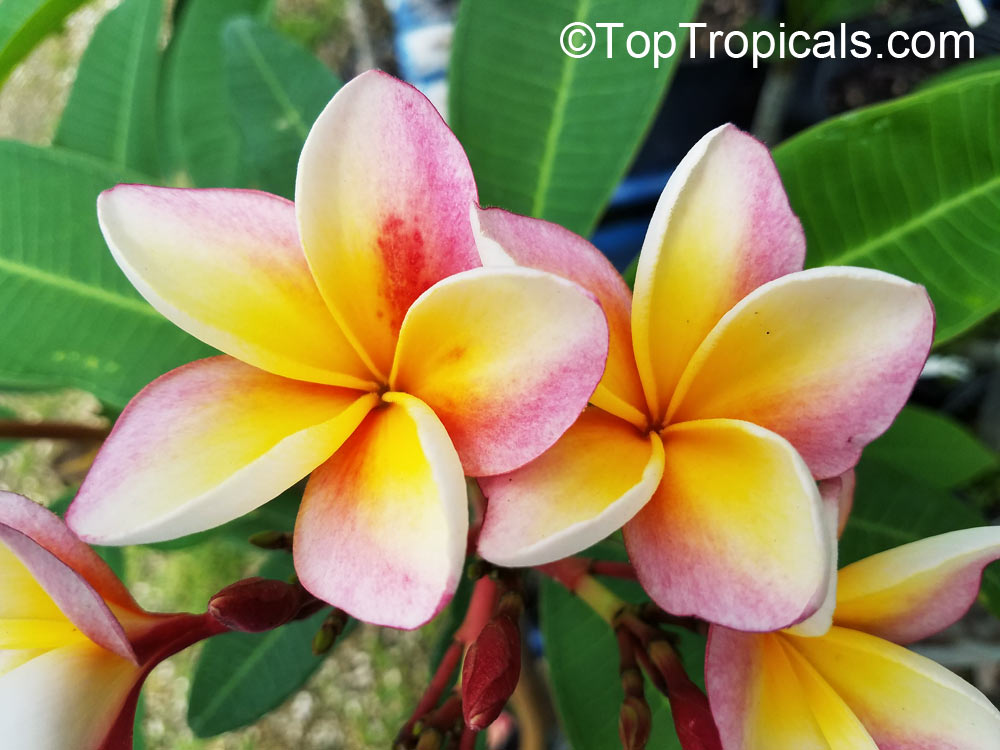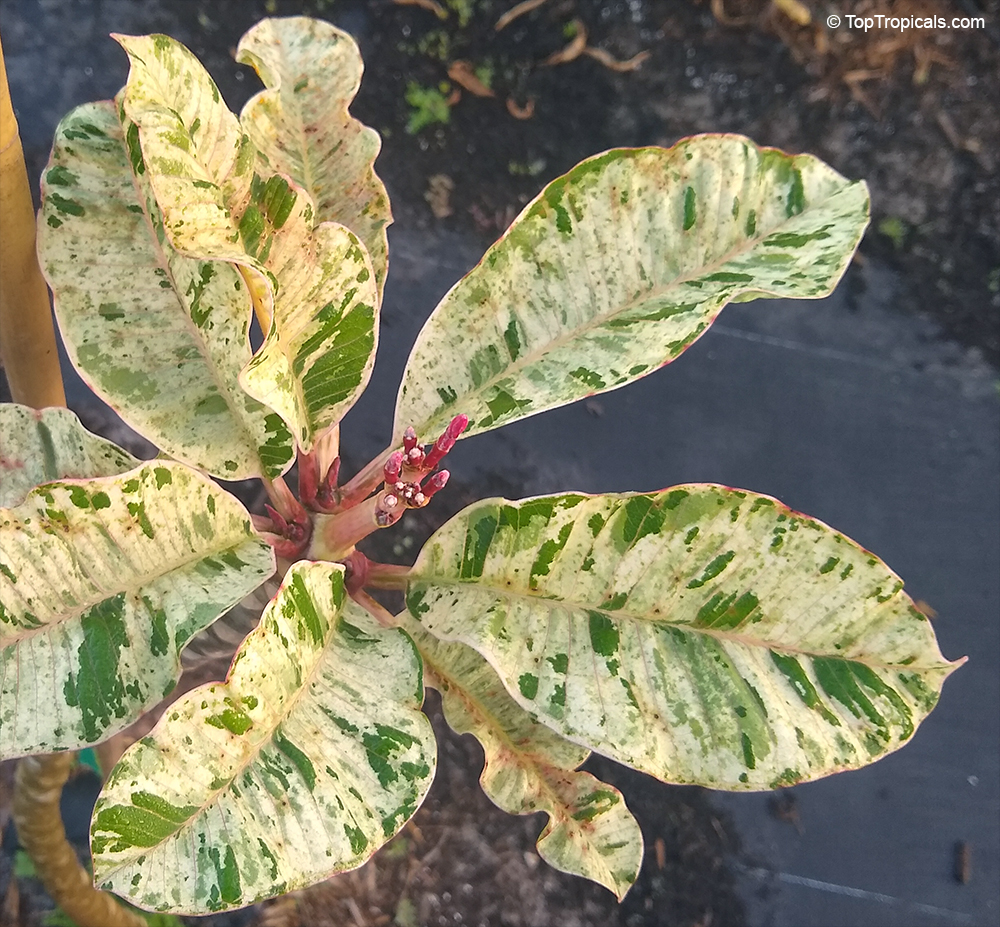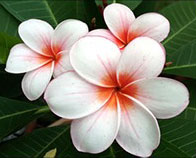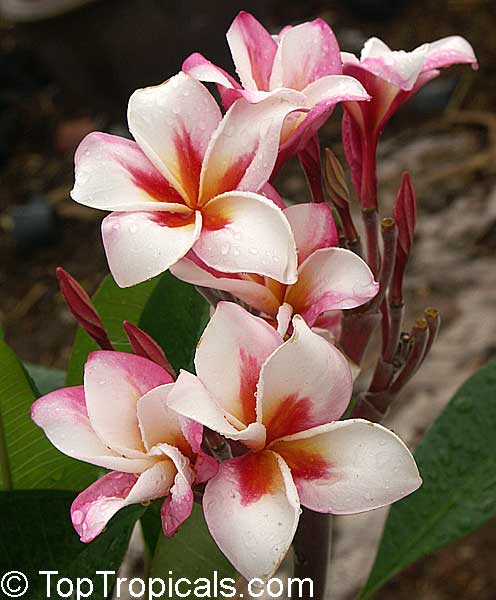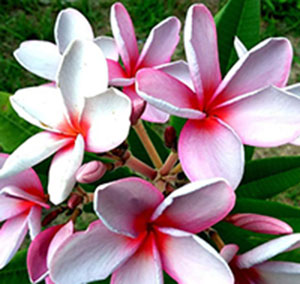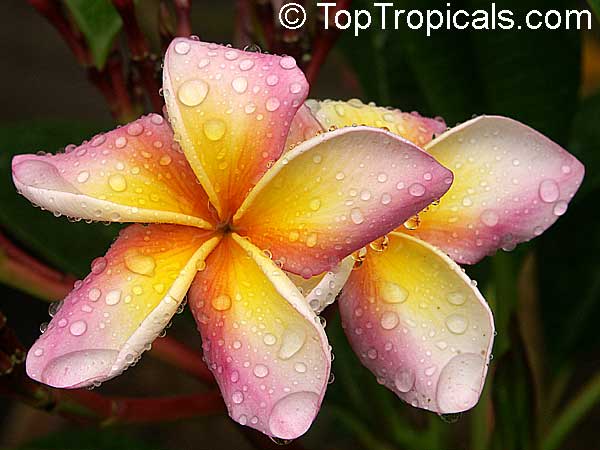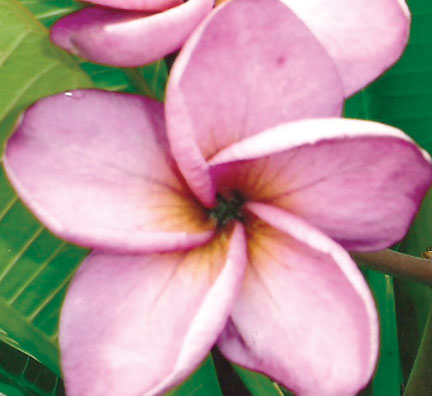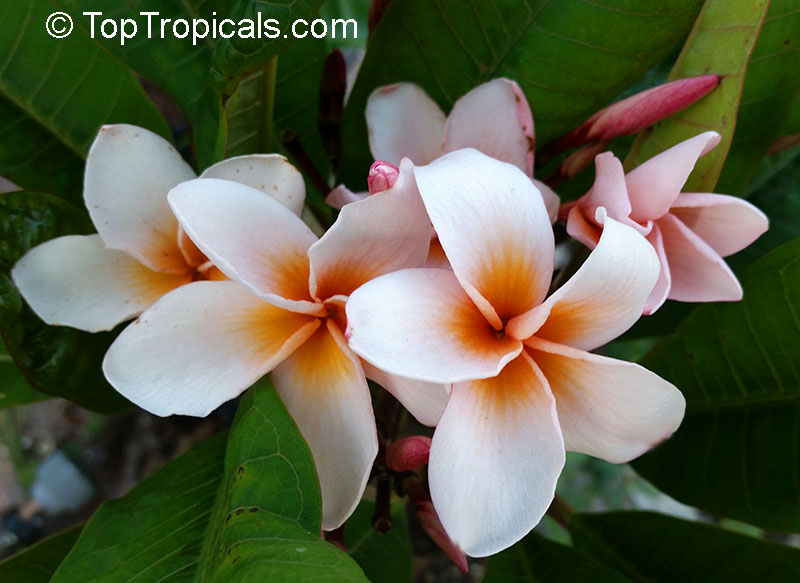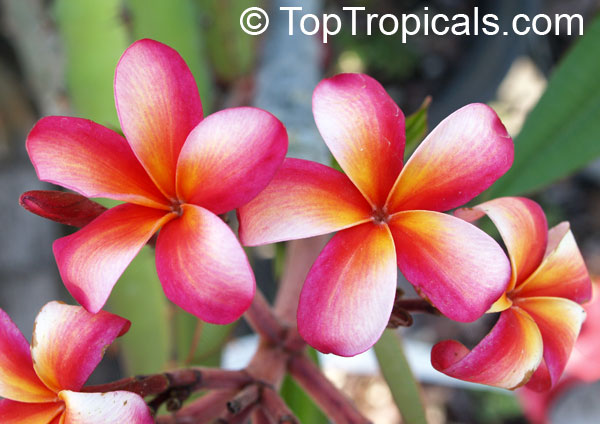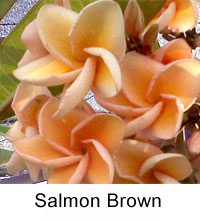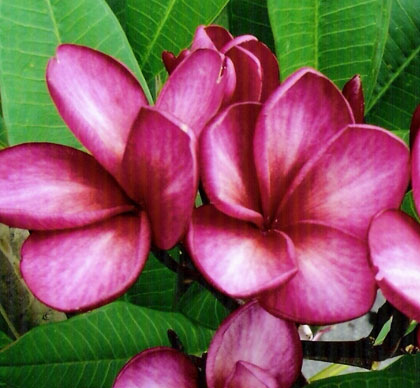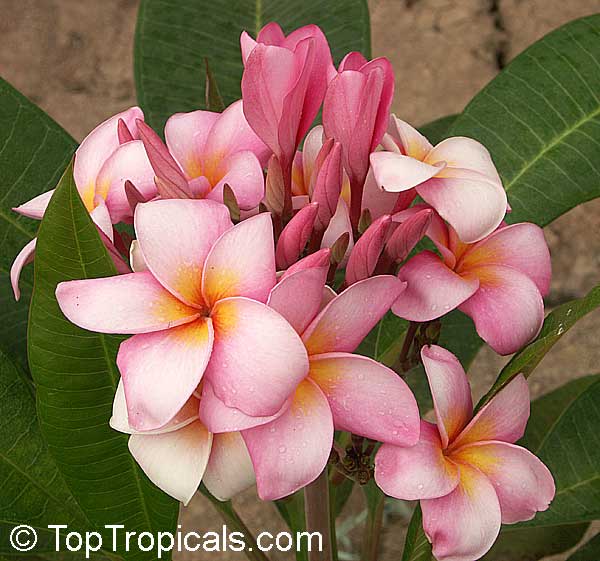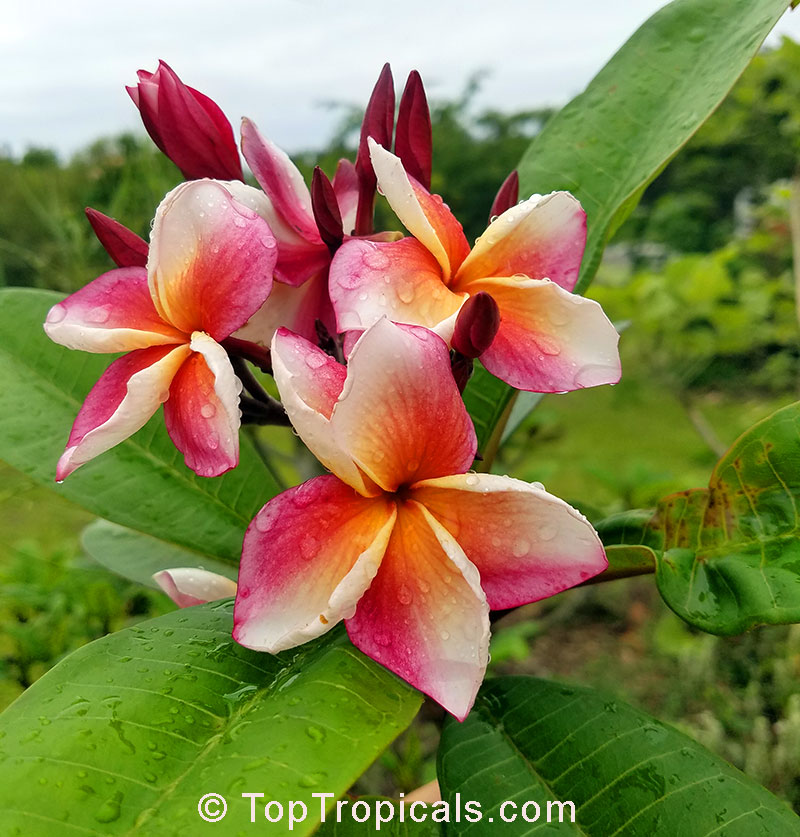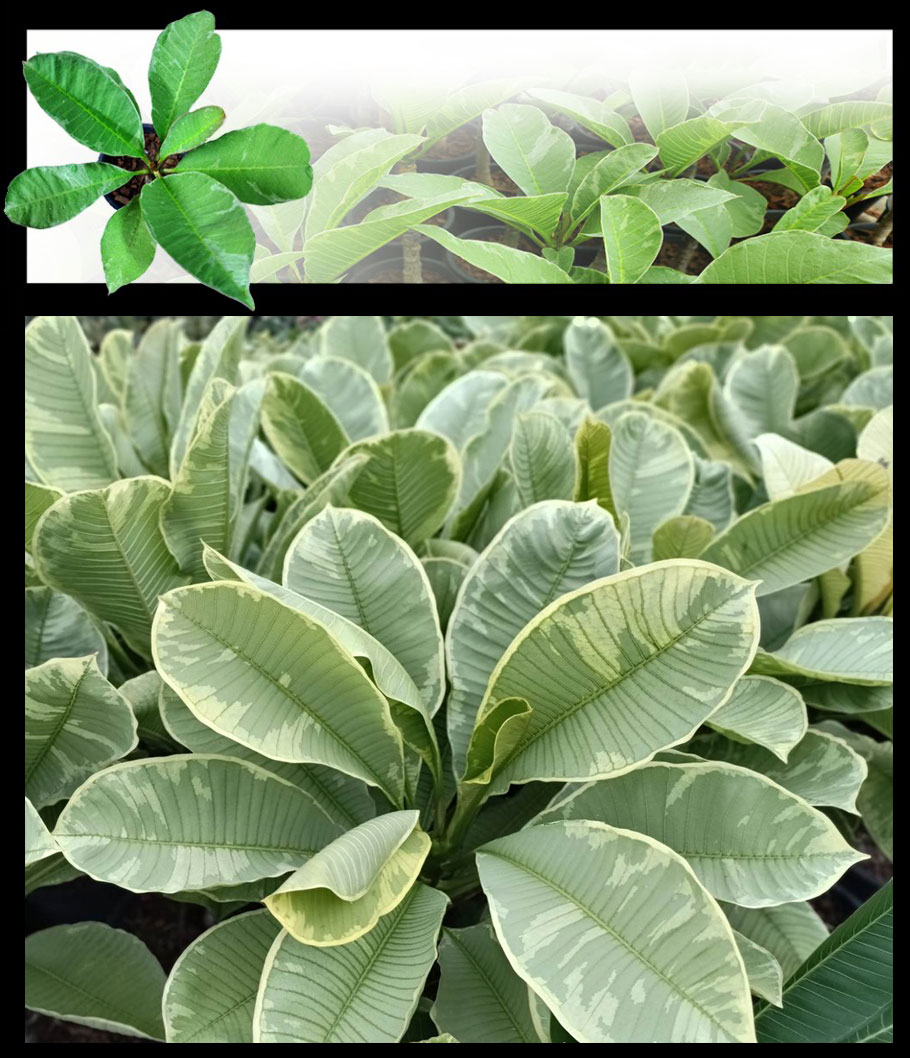Plumeria sp. (Plumeria)
Top Tropicals Plant Encyclopedia
Botanical name: Plumeria sp.
Common names: Plumeria, Frangipani
Family: Apocynaceae












Plumeria commemorates Charles Plumier, a seventeenth-century French botanist who described several tropical species. The genus contains 8 species of mainly deciduous shrubs and trees, originally from Central America, known for their strongly fragrant flowers. The tree can reach a height of 9m, though they are generally much smaller. Their fleshy branches contain a poisonous, milk sap. In the tropics, the terminally held flowers (generally white) appear before the leaves and continue to flower for most of the year. In subtropical climates the flowers appear in spring, after the leaves, and continue growing until the next winter. The fruit consist of 2 leathery follicles, althought the trees rarely fruit in cultivation. Most plumerias in gardens are hybrids.Although Plumerias are about as easy to grow as they come, the one thing they don't particularly like is to be overwatered. Your Plumeria comes in a specially designed soil which allows for excellent drainage, so any soil mix you purchase should do likewise. Water approximately once a week, or when you can see the soil is light, i.e., dry. Soak thoroughly so that water is running out the bottom drain holes. If you miss a watering, not to worry, Plumerias are incredibly tolerant of being dry. Plumerias are very salt tolerant.
Cultivars: Plumeria sp. (Plumeria)
- Plumeria sp. ''Baby Bird'' ('Baby Bird' Plumeria)
- Plumeria sp. ''Candy Stripe'' ('Intense Rainbow' Plumeria)
- Plumeria sp. ''Chompoo Orathai'' ('Chompoo Orathai' Plumeria)
- Plumeria sp. ''Elsee'' ('Elsee' Plumeria)
- Plumeria sp. ''First Kiss'' ('First Kiss' Plumeria)
- Plumeria sp. ''Golden Leaf'' ('Golden Leaf' Plumeria)
- Plumeria sp. ''Jeena Red'' ('Jeena Red' Plumeria)
- Plumeria sp. ''Kimo'' ('Kimo' Plumeria)
- Plumeria sp. ''Lai Namtan'' ('Lai Namtan' Plumeria)
- Plumeria sp. ''Lani's Beauty'' ('Lani's Beauty' Plumeria)
- Plumeria sp. ''Lueng Kob Chompoo'' ('Lueng Kob Chompoo' Plumeria)
- Plumeria sp. ''Moonlight'' ('Moonlight' Plumeria)
- Plumeria sp. ''Pink Border Leaf'' ('Pink Border Leaf' Plumeria)
- Plumeria sp. ''Poung Roi Hom'' ('Poung Roi Hom' Plumeria)
- Plumeria sp. ''Purple Toffy'' ('Purple Toffy' Plumeria )
- Plumeria sp. ''Sao Muangnon'' ('Sao Muangnon' Plumeria)
- Plumeria sp. 'Plumeria 'Sang Aroon'' ('Sang Aroon' Plumeria)
- Plumeria sp. 'Plumeria 'Thong Taweekun'' ('Thong Taweekun' Plumeria)
Similar plants: Plumeria sp. (Plumeria)
- Plumeria alba (Dwarf Plumeria)
- Plumeria cubensis (Plumeria )
- Plumeria montana (Whita Plumeria)
- Plumeria obtusa (Singapore Plumeria)
- Plumeria pudica (Bridal Bouquet)
- Plumeria rubra 'Pink' (Frangipani)
- Plumeria rubra 'Yellow' (Frangipani)
- Plumeria stenophylla (Frangipani)
- Plumeria tuberculata (Plumeria)
Recommended Fertilizer: SUNSHINE Pikake - Fragrant Flower Booster
Succulent Care. This plant is shipped bare-rooted. Plant it in well-drained soil mix, water and keep in warm (75-80F) place in filtered light. Let soil dry between waterings.
Recommended Fertilizer: SUNSHINE Pikake - Fragrant Flower Booster
Succulent Care. This plant is shipped bare-rooted. Plant it in well-drained soil mix, water and keep in warm (75-80F) place in filtered light. Let soil dry between waterings.
Recommended Fertilizer: SUNSHINE Pikake - Fragrant Flower Booster
Succulent Care. This plant is shipped bare-rooted. Plant it in well-drained soil mix, water and keep in warm (75-80F) place in filtered light. Let soil dry between waterings.
Recommended Fertilizer: SUNSHINE Pikake - Fragrant Flower Booster
Succulent Care. This plant is shipped bare-rooted. Plant it in well-drained soil mix, water and keep in warm (75-80F) place in filtered light. Let soil dry between waterings.
Recommended Fertilizer: SUNSHINE Pikake - Fragrant Flower Booster
Succulent Care. This plant is shipped bare-rooted. Plant it in well-drained soil mix, water and keep in warm (75-80F) place in filtered light. Let soil dry between waterings.
Recommended Fertilizer: SUNSHINE Pikake - Fragrant Flower Booster
Succulent Care. This plant is shipped bare-rooted. Plant it in well-drained soil mix, water and keep in warm (75-80F) place in filtered light. Let soil dry between waterings.
Recommended Fertilizer: SUNSHINE Pikake - Fragrant Flower Booster
Succulent Care. This plant is shipped bare-rooted. Plant it in well-drained soil mix, water and keep in warm (75-80F) place in filtered light. Let soil dry between waterings.
Recommended Fertilizer: SUNSHINE Pikake - Fragrant Flower Booster
Succulent Care. This plant is shipped bare-rooted. Plant it in well-drained soil mix, water and keep in warm (75-80F) place in filtered light. Let soil dry between waterings.
Recommended Fertilizer: SUNSHINE Pikake - Fragrant Flower Booster
Succulent Care. This plant is shipped bare-rooted. Plant it in well-drained soil mix, water and keep in warm (75-80F) place in filtered light. Let soil dry between waterings.
Last one
Recommended Fertilizer: SUNSHINE Pikake - Fragrant Flower Booster
Succulent Care. This plant is shipped bare-rooted. Plant it in well-drained soil mix, water and keep in warm (75-80F) place in filtered light. Let soil dry between waterings.
Recommended Fertilizer: SUNSHINE Pikake - Fragrant Flower Booster
Succulent Care. This plant is shipped bare-rooted. Plant it in well-drained soil mix, water and keep in warm (75-80F) place in filtered light. Let soil dry between waterings.
Recommended Fertilizer: SUNSHINE Pikake - Fragrant Flower Booster
Succulent Care. This plant is shipped bare-rooted. Plant it in well-drained soil mix, water and keep in warm (75-80F) place in filtered light. Let soil dry between waterings.
